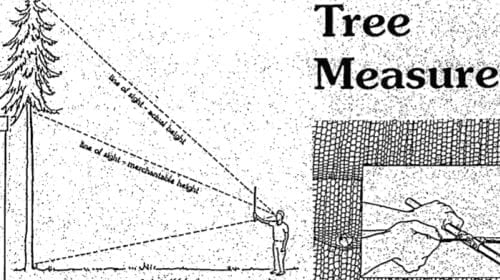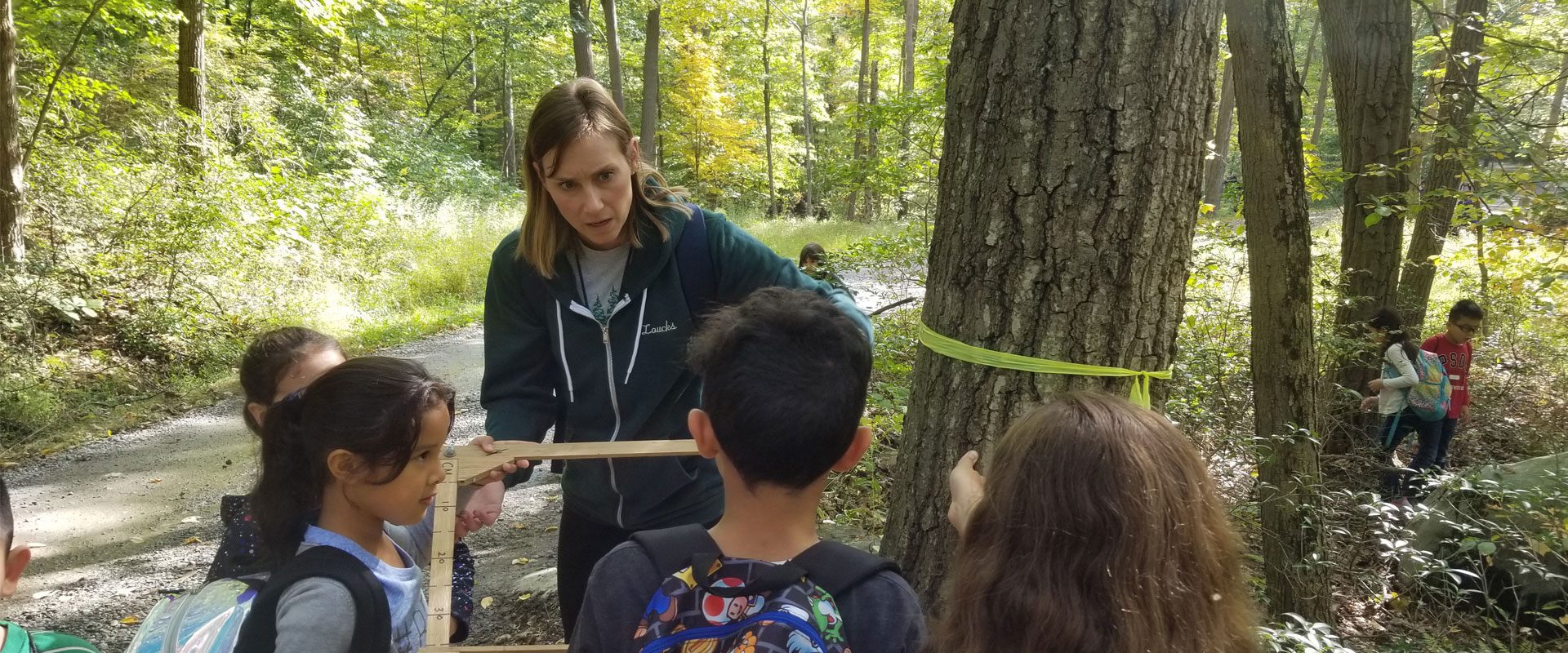Tree Measurement
Students learn and practice how a variety of tree and forest measurements, such as height, age, growth rate, and wood volume are obtained. It is recommended that students first practice their tree identification skills (see “Tree Identification”).
Pacing is a means of estimating the distance between points on the ground. A pace is the distance walked each time your right or left foot touches the ground. Once you know your pace, you can calculate approximate distances.
A Biltmore stick is used to measure tree diameter and height, from which wood volume can be calculated and compared to measurements of real wood walls inside the Center for Science and Education. The exercise can be limited to single trees or extended to trees on a 0.1-acre plot to calculate volume per acre and timber value.
A hollow, auger-like tool called an Increment Borer can be used to extract a tree core sample that can provide information about the history or age of a standing tree through examination of a tree’s annual rings.
These measurement exercises lead naturally to discussions about natural resources, forestry, and other land uses.
Tree Measurement Unit

Directions for how to pace and use the Biltmore stick and Increment Borer, tables for calculating wood volume, a glossary, as well as a tree inventory data sheet are provided.

